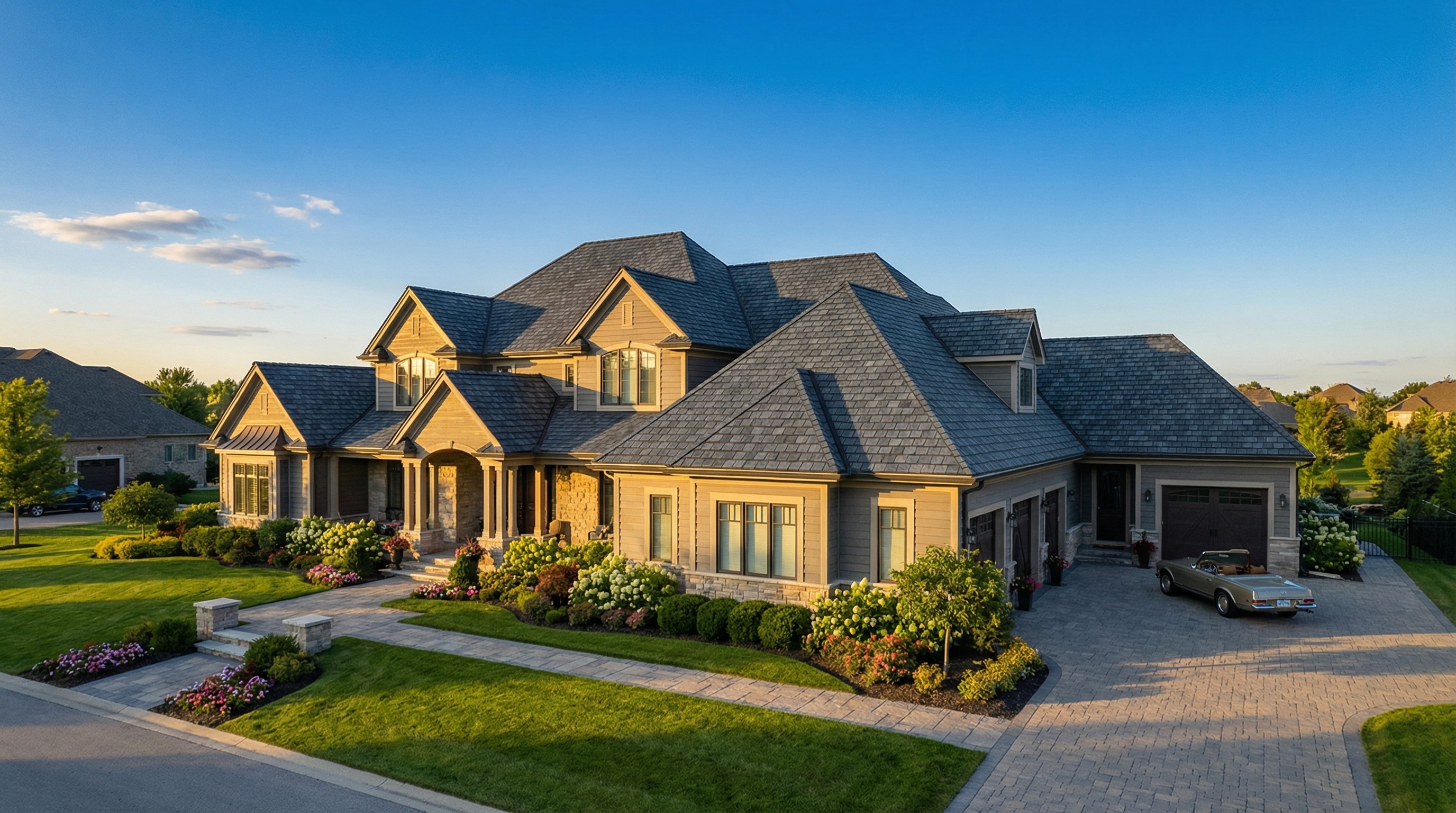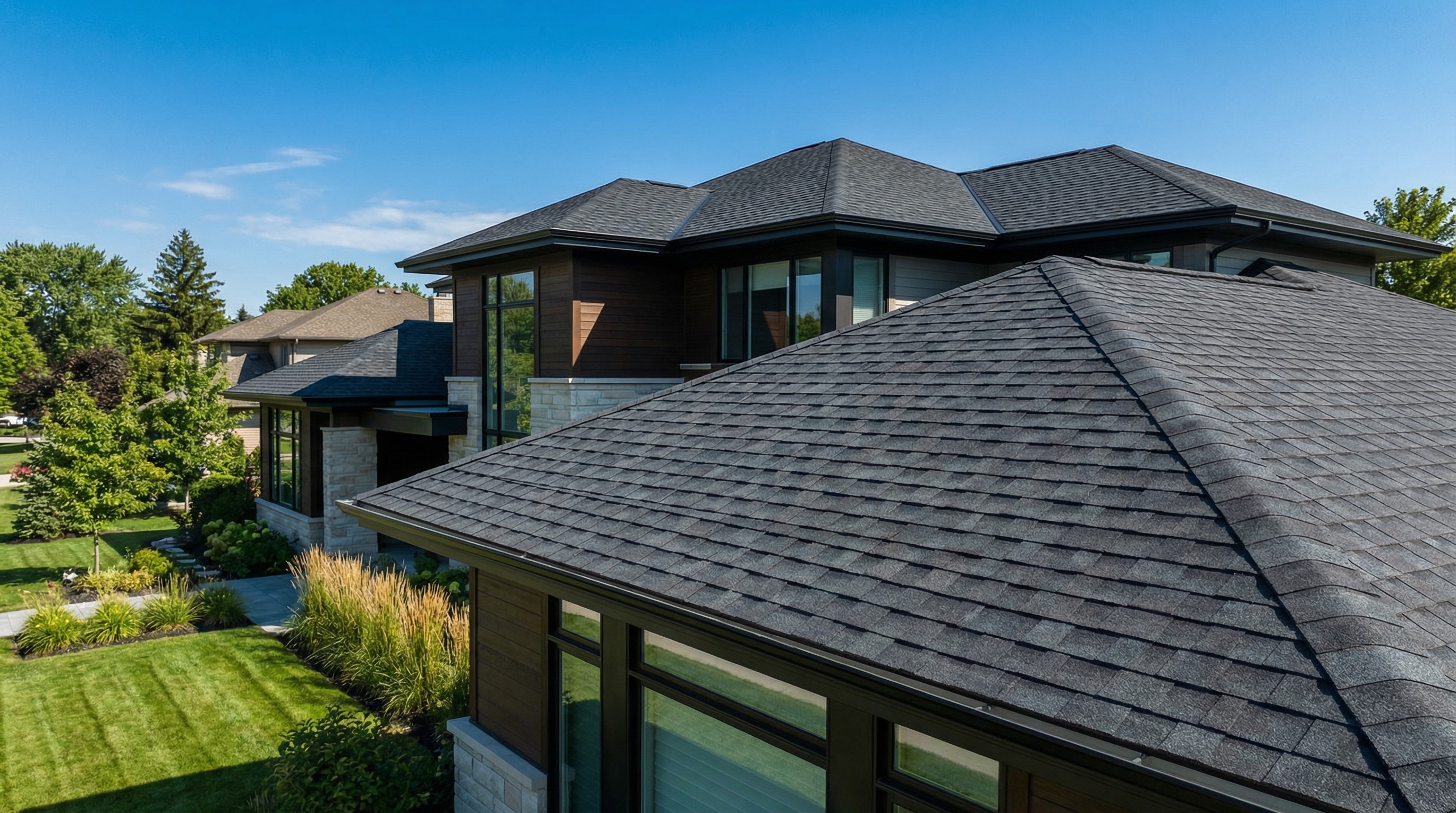Selecting the right roof shingle can be challenging when you're faced with numerous types, styles, and price points available on the market.
In practice, most homeowners only need to understand a handful of shingle types to make a confident decision. This guide breaks down nine common roof shingle options, including what each one costs, how long it lasts, and the tradeoffs you'll want to consider before your next roof replacement.
What Are the Different Types of Roof Shingles
The most common roof shingle types are asphalt (including 3-tab, architectural, and luxury), metal, wood, slate, composite, clay tile, concrete tile, rubber, and solar. Asphalt shingles cover the vast majority of homes in North America because they're affordable and easy to install. The right choice for your home depends on your budget, your local climate, how long you want the roof to last, and the look you're going for.
So what exactly is a shingle? It's simply an individual piece of roofing material. R...
Let's walk through each type so you can see how they compare.
Asphalt shingles
Asphalt shingles are the most popular roofing material in the United States, for several practical reasons. They're affordable, available everywhere, and nearly every roofing contractor knows how to install them. An asphalt shingle starts with a fiberglass mat, which is then coated with asphalt and topped with ceramic granules. The granules give the shingle its color and protect it from UV damage.
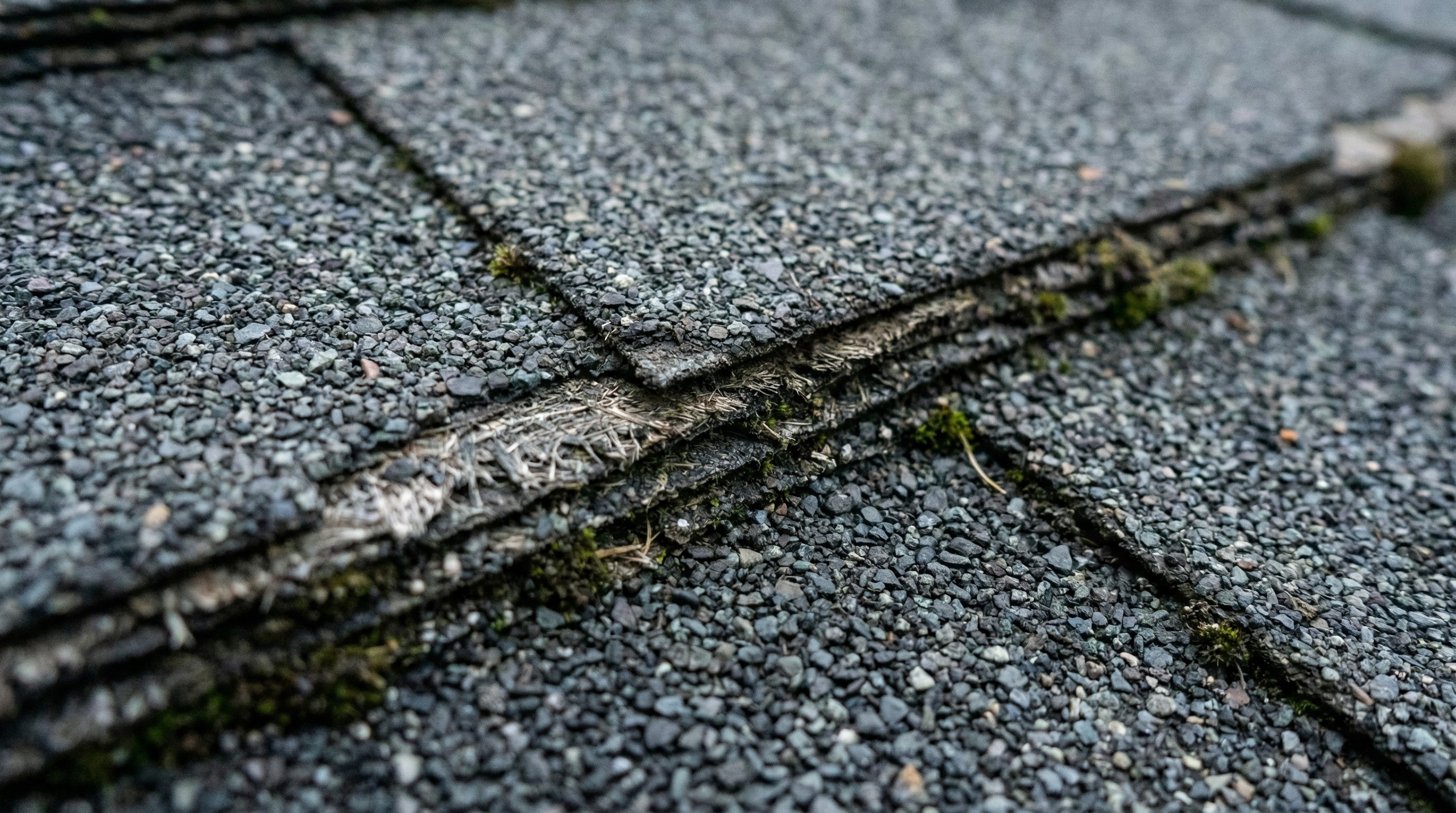
Within the asphalt category, you'll find three distinct tiers. Each offers different performance, appearance, and price points.
3-tab shingles typically cost $3-5 per square foot installed, while architectural shingles run $5-8 per square foot, and luxury shingles can cost $8-15 per square foot.
3-tab shingles
3-tab shingles are the most basic and least expensive asphalt option. Each shingle strip has three tabs cut into it, which creates a flat, uniform look across your roof. While 3-tab shingles provide basic protection, they typically last only 15 to 20 years and don't hold up as well in high winds. For this reason, many roofers now consider them outdated, and architectural shingles have largely replaced them as the standard choice.
Architectural shingles
Architectural shingles (also called dimensional or laminate shingles) have multiple layers bonded together. The layered construction creates a richer, three-dimensional appearance that adds visual depth to your roofline. Beyond looks, architectural shingles perform better too. They handle wind better than 3-tab shingles and typically last 22 to 30 years. Today, architectural shingles are what most contractors install on new roofs.
Luxury shingles
Luxury shingles sit at the top of the asphalt lineup. They're thicker and heavier than other asphalt options, designed to mimic the look of natural slate or wood shake. A luxury shingle roof can last 30 years or more and offers the best curb appeal of any asphalt option. However, luxury shingles come with a significant cost increase compared to architectural shingles.
Pros of asphalt shingles
Affordable upfront cost: Asphalt is the least expensive roofing material for most homes
Easy to find contractors: Nearly every roofer installs asphalt shingles
Wide color selection: Available in dozens of colors and styles to match your home
Simple repairs: A damaged shingle can be replaced individually without redoing the whole roof
Cons of asphalt shingles
Shorter lifespan: Asphalt won't last as long as metal, slate, or tile
Weather vulnerability: Extreme heat can cause premature aging, and large hail can crack shingles
Less sustainable: Asphalt shingles aren't the most eco-friendly option and often end up in landfills
Metal roofing shingles
Metal shingles are individual roofing pieces designed specifically for homes. They're different from the large standing seam panels you might see on commercial buildings or barns. Metal shingles can be manufactured to look like traditional asphalt shingles, slate, or even wood shake, so they blend in with residential neighborhoods.
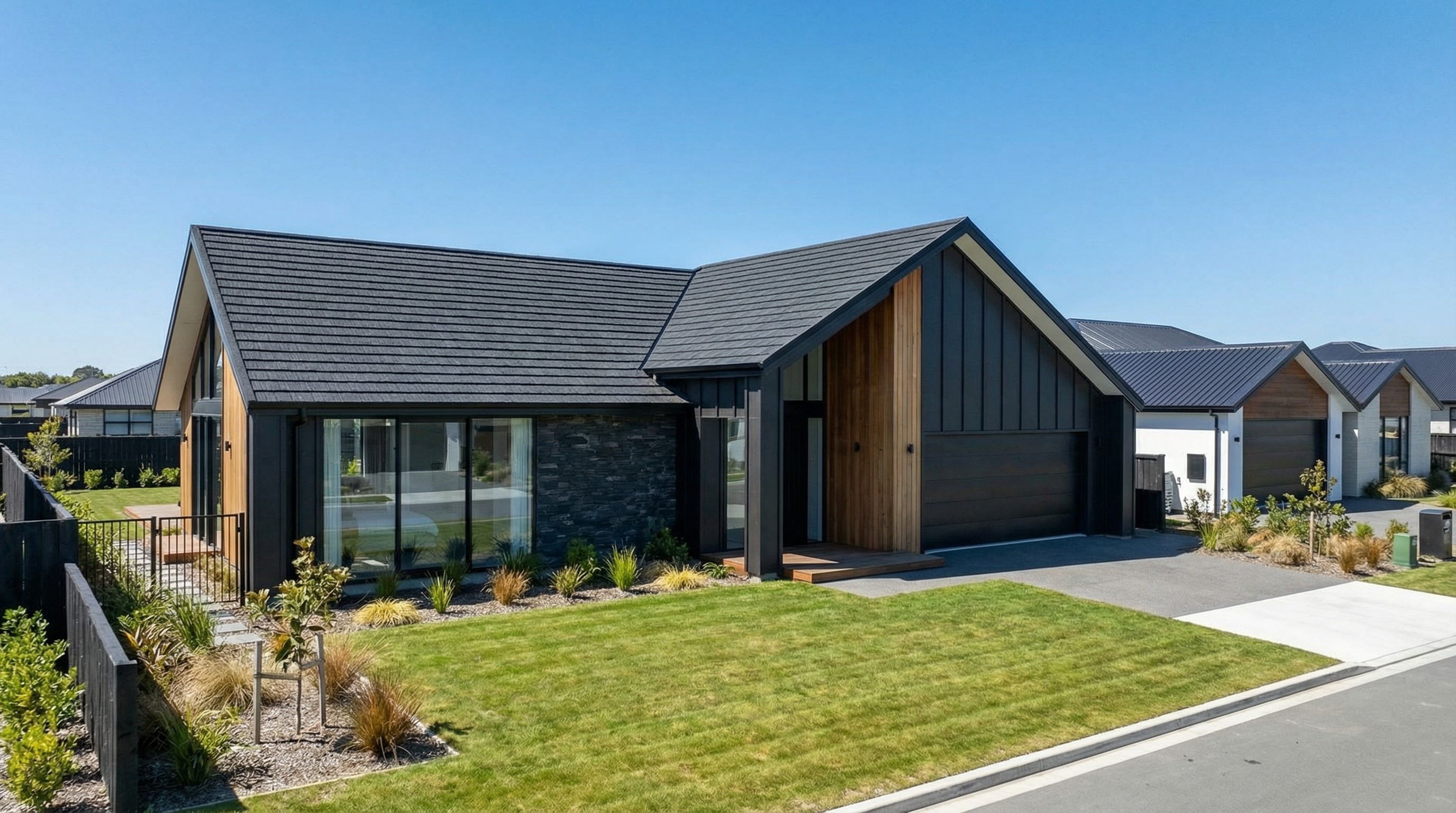
The upfront cost is higher than asphalt, but metal roofs often last two to three times longer. For homeowners planning to stay in their home long-term, the higher upfront investment often provides better long-term value.
Steel shingles
Steel is the most common and affordable metal shingle option. Steel shingles are typically coated with zinc (called galvanized steel) or an aluminum-zinc alloy (called Galvalume) to prevent rust. Galvalume coating typically costs 10-15% more but lasts longer in harsh climates. Steel works well in most climates and offers solid durability at a reasonable price point for metal.
Aluminum shingles
Aluminum is naturally rust-resistant and lightweight. Aluminum shingles are an excellent choice for coastal homes where salt air would corrode other metals over time. They cost more than steel but require less maintenance in harsh environments.
Copper shingles
Copper is the premium metal option. Over time, copper develops a distinctive blue-green patina that gives your home a unique, timeless appearance. However, copper is also the most expensive metal choice by a significant margin.
Pros of metal shingles
Long lifespan: Metal roofs often last 40 to 70 years with proper installation
Durable: Metal resists wind, fire, and most hail damage
Energy efficient: Metal reflects solar heat, which can help keep your home cooler
Low maintenance: Once installed, metal roofs require very little upkeep
Cons of metal shingles
Higher upfront cost: Metal costs more than asphalt initially, though it may save money over time
Noise potential: Rain can be louder on metal without proper underlayment
Denting: Some metals, particularly aluminum, can dent from large hail impacts
Composite shingles
Composite shingles are synthetic products engineered to look like natural materials such as slate or wood. Manufacturers typically blend rubber, plastic, and fiberglass to create a durable product that mimics premium looks without the extreme weight or cost of natural materials.
Composite shingles serve as a middle-ground option. They cost more than asphalt but less than real slate or cedar. They're also much lighter than natural stone, which means most homes can support them without structural modifications.
Pros of composite shingles
Mimics premium looks: Composite can closely resemble slate or wood at a fraction of the cost
Lightweight: Much easier to install than natural stone, and most roof structures can support them
Durable: Composite resists impact, rot, and insects better than natural wood
Extended warranties: Many manufacturers offer longer coverage than standard asphalt
Cons of composite shingles
Newer product: Composite shingles haven't been around as long, so there's less long-term performance data
Quality varies: Performance differs significantly between manufacturers, making thorough research essential when selecting composite shingles
Higher cost than asphalt: Still a notable investment compared to standard shingles
Wood shingles
Wood shingles offer a natural, rustic look that many homeowners love. They're machine-cut to create a smooth, uniform appearance. Wood shakes, by contrast, are hand-split and have a rougher, more irregular texture. Both fall under the "wood roofing" category, but shingles have a cleaner look.
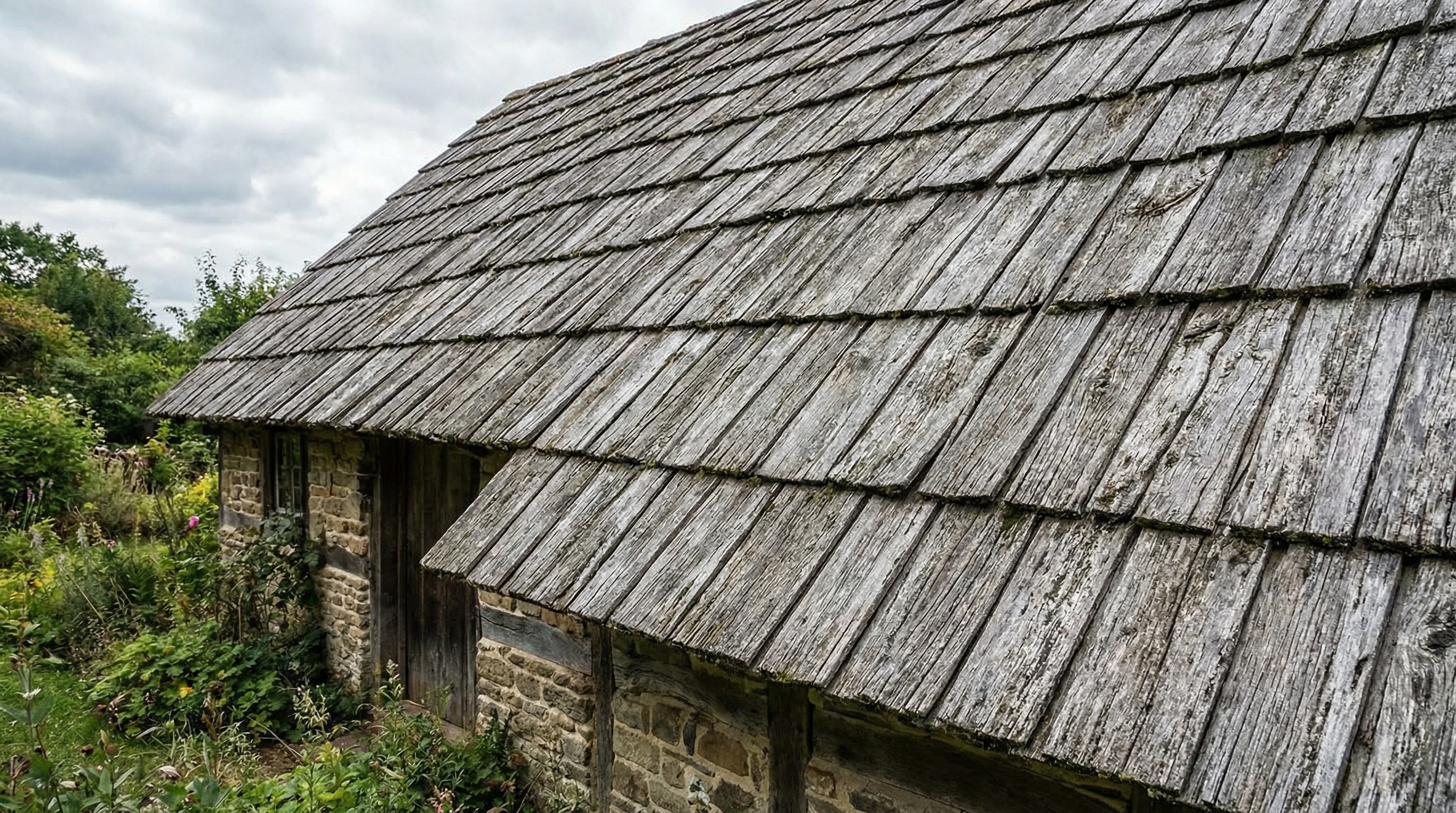
Cedar is the most popular wood choice because it naturally resists rot and insects. Over time, cedar weathers to an attractive silvery gray. Redwood is another option, though it's less common and typically more expensive than cedar.
Pros of wood shingles
Natural beauty: Wood provides a warm, classic appearance that's hard to replicate
Good insulation: Wood offers natural thermal protection for your home
Eco-friendly: Wood is biodegradable and comes from a renewable resource
Cons of wood shingles
Fire risk: Wood often requires fire-retardant treatment, and some areas prohibit wood roofs entirely
Maintenance: Wood roofs require periodic cleaning and treatment to stay healthy
Moisture issues: Without proper care, wood can rot, split, or grow mold
Code restrictions: Many fire-prone regions don't allow wood roofing
Slate roofing shingles
Slate is natural stone, quarried from the earth and cut into individual shingles. It's considered a premium, high-end roofing material and is one of the longest-lasting roof types available. Some slate roofs have protected homes for well over a century.
Slate offers exceptional aesthetic appeal, but it comes with practical considerations. Slate is extremely heavy, so your home's structure may require reinforcement before installation. Slate also requires specialized installers who know how to work with the material without cracking it.
Pros of slate shingles
Exceptional lifespan: Slate can last 75 to 100+ years when properly installed
Fire resistant: Natural stone doesn't burn
Elegant appearance: Slate offers a classic, sophisticated look that adds significant curb appeal
Low maintenance: Once installed, slate requires minimal upkeep
Cons of slate shingles
Very heavy: Most homes require structural reinforcement to support a slate roof
High cost: Slate is one of the most expensive roofing options available
Fragile underfoot: Slate can crack if walked on improperly during maintenance
Specialized installation: Finding experienced slate roofers can be challenging in some areas
Clay and concrete tile shingles
Clay tiles are made from kiln-fired clay and are common on Mediterranean, Spanish, and Southwestern-style homes. They excel in hot, dry climates and can last for decades. Concrete tiles offer a more affordable alternative and can be molded to mimic clay, slate, or wood shake.
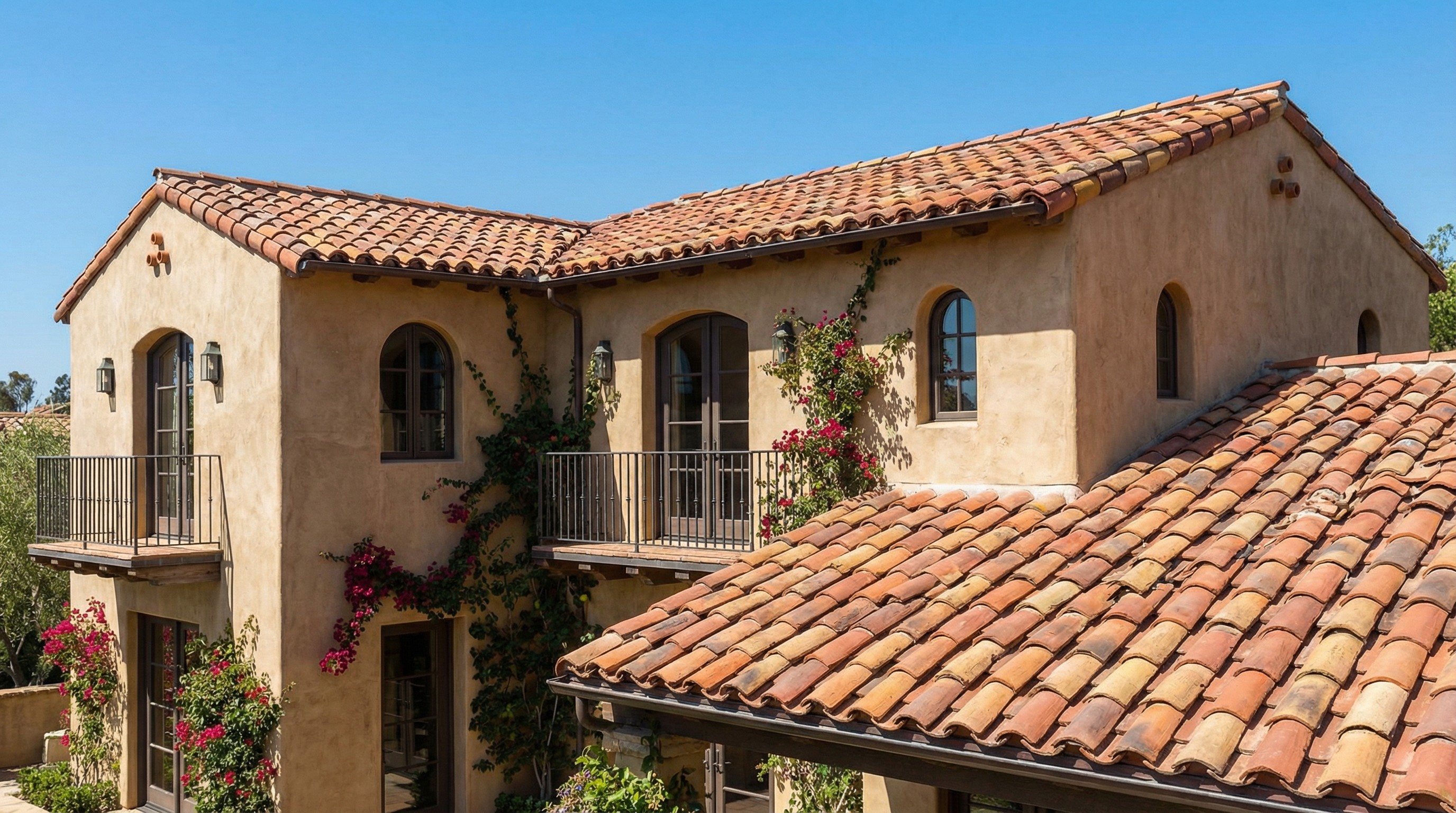
Feature | Clay tiles | Concrete tiles |
|---|---|---|
Weight | Heavy | Very heavy |
Cost | Higher | More affordable |
Style options | Traditional | More versatile |
Best climate | Hot and dry | Works in most climates |
Both clay and concrete are extremely durable and fire-resistant. However, both are h...
Rubber shingles
Rubber shingles are an eco-friendly option made from recycled materials, often including old tires. They're designed to look like slate or wood shake but weigh much less and resist impact better than natural materials.
Rubber roofing is a newer product category, so there's less long-term performance data compared to traditional materials. Some homeowners also notice a rubber smell initially, though it typically fades over time. For environmentally conscious homeowners who want a slate look without the weight or cost, rubber shingles are worth considering.
Solar shingles
Solar shingles serve two purposes at once. They protect your home from the elements while generating electricity. Unlike traditional solar panels that sit on top of your existing roof, solar shingles integrate directly into your roofline for a seamless appearance.
Solar shingles are ideal for new construction or full roof replacements where aesthetics matter. They're often approved in communities where traditional solar panels face restrictions. However, solar shingles come with the highest upfront cost of any shingle type, typically ranging from $15-25 per square foot installed. They also produce slightly less energy per square foot than traditional panels.
How to choose the best shingle type for your home
Picking the right shingle comes down to balancing several factors. Here's what to consider:
When discussing these options with contractors, focus on getting detailed explanations for their recommendations rather than accepting vague suggestions. Understanding the specific benefits of each material type helps you evaluate whether a contractor's proposal truly fits your needs and budget.
Budget: Factor in both upfront costs and long-term value. A more expensive roof that lasts twice as long may cost less over time.
Climate: Consider your area's typical weather, including wind, hail, heat, humidity, and fire risk.
Home structure: Heavier materials like slate, clay, and concrete may require a structural assessment before installation.
HOA rules: Some homeowners associations restrict certain materials or colors, so check your community guidelines first.
Aesthetic goals: Match the shingle style to your home's architecture for the best curb appeal.
Local building codes: Some regions have specific requirements for fire ratings or wind resistance.
How to get the best price on your new roof
Prices for the same roofing materials can vary significantly between contractors-often due to different overhead costs, sales commissions, and markup structures. The best way to ensure you're getting a fair deal is to compare multiple quotes from vetted contractors with transparent, line-item pricing that shows exactly what you're paying for.

